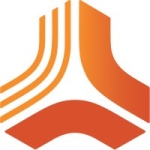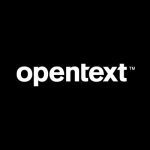What is our primary use case?
I am a consultant and this is one of the solutions that my company uses to help our clients.
Rational DOORS is used to help our customers with system engineering. I use it to design complex systems like trains and cars. DOORS is used to collect all of the requirements for these big systems and then we try to organize the requirements. We make sure that the system functions in compliance with the requirements.
How has it helped my organization?
Using this solution will streamline processes and generally improve the quality of them.
What is most valuable?
The most important feature is that it is able to manage a lot of requirements.
It helps to maintain global compliance during all of the stages of development. When you specify the functionality of the system, it is able to show that the system is compliant with the needs. Moreover, it is easy to maintain compliance based on the design.
This solution is able to manage a lot of data.
It is very customizable and easy to scale.
What needs improvement?
Implementing processes should be easier.
The interface is not very user-friendly and has not evolved in a long time. People like to have a nice tool that is up to date with the latest technology, and this is not the case with DOORS.
Buyer's Guide
IBM DOORS
April 2025
Learn what your peers think about IBM DOORS. Get advice and tips from experienced pros sharing their opinions. Updated: April 2025.
848,716 professionals have used our research since 2012.
For how long have I used the solution?
I have been using IBM Rational DOORS for more than ten years.
What do I think about the stability of the solution?
Rational DOORS is very reliable compared to the other tools that I have used. It works very well.
What do I think about the scalability of the solution?
It is very scalable. You can start with a few sets of data and then add more as needed, so it's very scalable. It is also easy to customize and I am satisfied with it.
Depending on the project, we may have one or two people using this solution, all the way up to perhaps 50 people.
How are customer service and support?
I have never spoken with anyone at IBM's support.
Which solution did I use previously and why did I switch?
I have also used REQTIFY.
How was the initial setup?
The initial setup is complex, although it is linked to the complexity of the project.
If you have something very simple then the setup will be straightforward but if you have something complex then it will be more difficult. For example, if you are designing a launcher to send satellites into space then you want to have enough information about it before you start the system. These systems are very expensive to develop, so you want to demonstrate that it will be of good quality and be able to handle the operations required to achieve the goals of the project.
It takes between one week and one month to deploy, depending on the requirements.
What about the implementation team?
I can perform the deployment myself, although sometimes we need to involve many people. There are engineers, quality teams, and validation teams. Many parts of the business can be involved in the deployment.
What was our ROI?
Because this is an expensive solution, if you want to realize ROI then you have to use it for big projects.
What's my experience with pricing, setup cost, and licensing?
This is an expensive solution. Licensing fees are billed annually and there is no support included with what I pay.
Which other solutions did I evaluate?
There is another solution called Rational DOORS Next Generation that has a nicer interface and it is easier to use, but it is less scalable.
What other advice do I have?
The difficulty with implementing this solution is that you are asking the organization to change its processes. The important part is, however, that you are trying to improve the quality of the systems. You have to maintain the customer's vision and show that the goals will be reached, but done more efficiently. In the end, you have to give the customer every assurance that the work is done in its entirety.
This is a solution that I recommend. If people need to write specifications in the context of engineering then I think that this is the best solution on the market. If on the other hand, you want to manage requirements, then I don't think that it is an appropriate tool.
Similarly, DOORS is a good tool because you have to maintain compliance with all of the requirements during development. If you have a supplier with no needs or requirements then it is not at all an appropriate tool.
Overall, it is a good solution but they need to update the user interface. If they also lower the price then it would be perfect.
I would rate this solution a seven out of ten.
Disclosure: My company has a business relationship with this vendor other than being a customer: Partner













